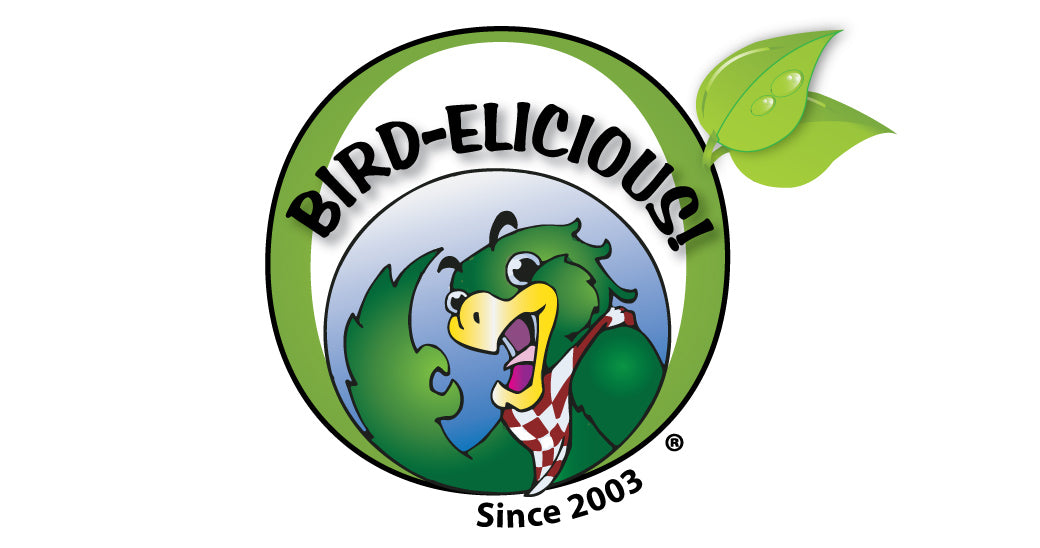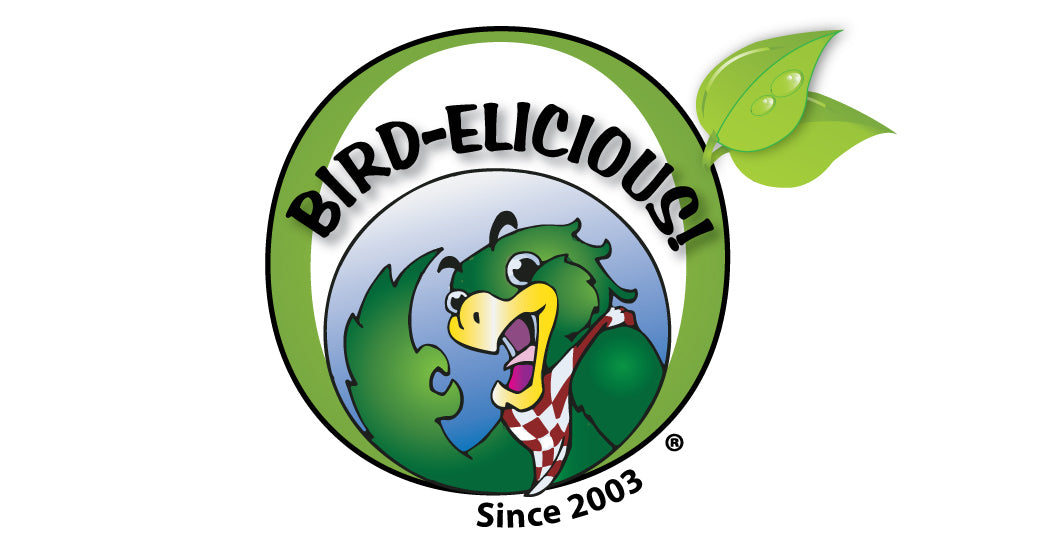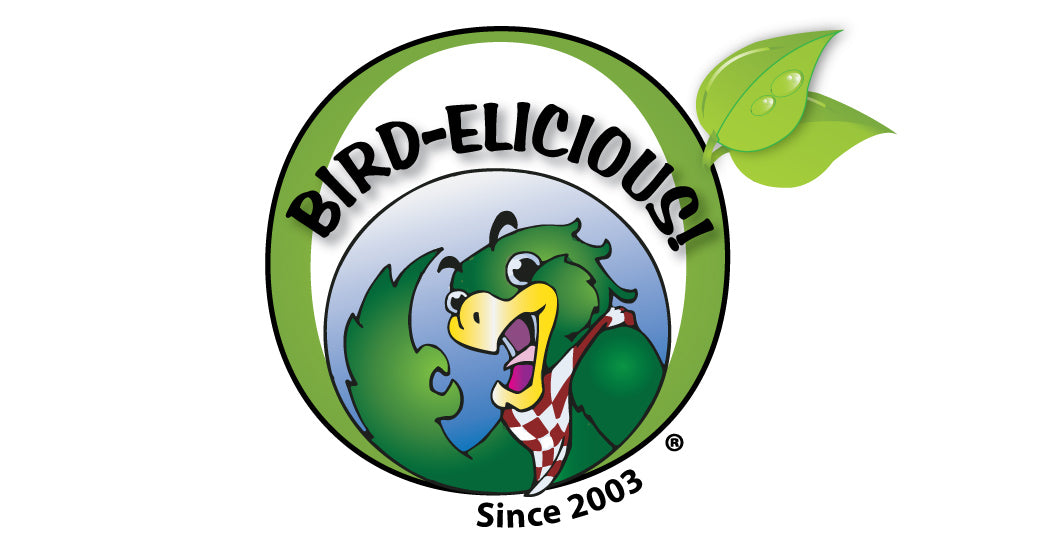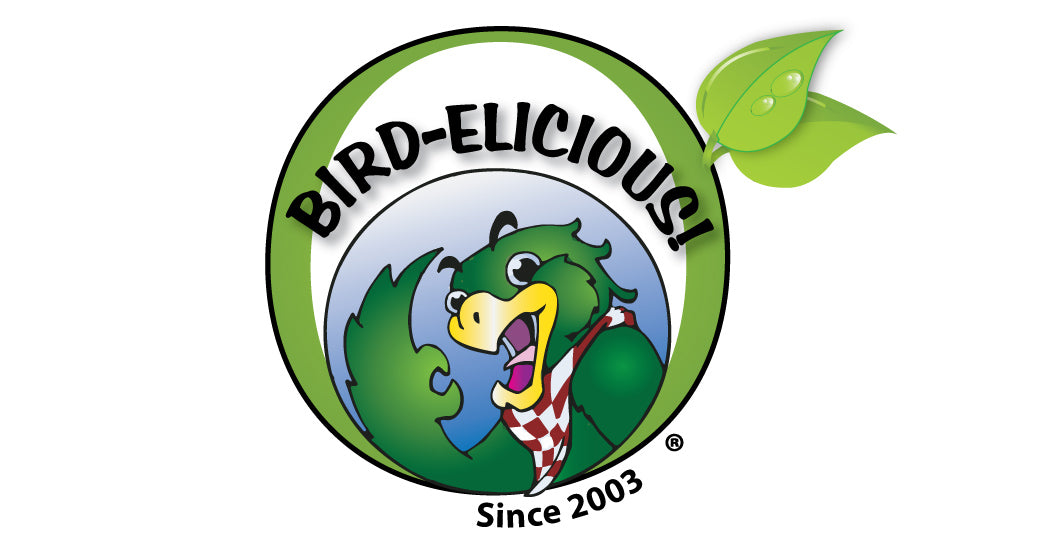First of all let’s distinguish between “sweet potatoes and yams”. I hear the question asked all the time “What’s the difference?” The “sweet potato” (Ipomoea batatas) is the darker, more yellow to orange colored potato. It’s the variety we commonly consume at our Thanksgiving dinners here in the U.S. – on the other hand the yam (Dioscorea) is the potato that is white inside. It is higher in starch, although both varieties are fairly high in starch. (Rev.1) The starch content in 100 grams of a sweet potato is 7.5 and in a yam is 23.1. What an alarming difference! When compared to a grape for instance which is 0! (I don’t suggest feeding grapes to our birds due to the high fructose content and other reasons.) The “dead” starch in foods like sweet potatoes and yams (and other foods like squash and pumpkin) can trigger fructose malabsorption leading to potential gut flora problems such as “avian leaky gut syndrome.”
Regarding feeding sweet potatoes cooked or raw is an age-old question that never seems to get resolved; I seriously doubt I will be the person to end the debate. Here’s my two cents for what it’s worth.
There aren’t many species of parrots that would actually consume sweet potatoes (tubers-root vegetables) in the wild. Cockatoos, Cockatiels, the Arid Rainforest types of species of exotic birds who engage in ground foraging would be the most likely to consume these kinds of foods. Birds that live in the canopy of the Tropical Rainforest would not consume many root vegetables in their indigenous habitats. First of all not many truly edible tuberous foods would be found in their habitats, and secondly those species don’t spend much time, if any on the forest floor; they spend the bulk of their time in the canopy of the forest. So there’s that.
For those species mentioned above that would consume the edible tubers they would most likely consume those foods on a fairly limited basis, not as a main, staple food. And yes, they would consume them RAW. Birds don’t have any means of cooking their food in the wild!
Regardless of our research indicating that raw sweet potatoes contain the amino acid “trypsin” a protein inhibitor, meaning that it actually inhibits the absorption of certain nutrients, primarily beta-carotene the precursor to Vitamin A birds in the wild would still eat this food…raw.
While many of us are looking to provide the most amount of nutrition to our birds, dense nutrition, the most amount of “bang for the buck”, cooking just doesn’t do it. While we think we are improving the absorption of beta-carotene in sweet potatoes by even slightly steaming or cooking them in any way, we are reducing other vital nutrients that are highly affected by any kind of heat. Digestive enzymes overall are easily destroyed by heat, any temperature over 115-118 degrees even for a very short period of time. If sweet potatoes are “slightly steamed” digestive enzymes can easily be destroyed considering that water turns to steam at only 100 degrees F and that temperature very rapidly rises to equal the boiling point of the boiling water at 212 F. –My point is this, in order to improve the bioavailabilty of the beta-carotene in sweet potatoes we are destroying many other digestive enzymes. Hence we are well on our way to preparing highly processed food for our bird; food that lacks real, naturally occurring nutrients.
In addition to destroying other vital digestive enzymes during this cooking or steaming process of our bird’s sweet potatoes we are also destroying or minimizing heat-sensitive vitamins such as Vitamin C that is extremely heat sensitive at 374 degrees F, but also is almost completely lost in the leaching out through moisture loss in the water the sweet potato is cooked in. In other words even during the steaming process the vegetable “sweats” the moisture out and Vitamin C and is lost in the sweated out moisture. So are some water-soluble vitamins such as the B vitamins. Some of the Vitamin Bs are also heat sensitive at 212 degrees F.
Minerals are lost during cooking as well, during the “sweating” process if the food is steamed, or during boiling if that method is used. And remember if we bake any temperature over 212 degrees F destroys just about every nutrient. Even fatty acids. Oh boy, here is yet other nutrients we need to be concerned with.
Omega 3, that anti-inflammatory, healthy dietary fatty acid we are all desperately attempting to pump into our birds’ diets oxidizes at 225 degrees F. So regardless if we are steaming, boiling or baking we are getting very close to destroying that very crucial Omega with any type of cooking we are doing to our birds’ foods. Just because we may not reach 225 degrees F doesn’t mean that we are not affecting this Omega. Even at lower temperatures we are compromising this fatty acid, and totally destroying it at the maximum temperature of 225F. At that temperature it actually become a “free radical” and is no longer a healthy fatty acid, but instead a carcinogenic.
Now let’s turn our attention to the more obvious. The anatomy of the exotic bird and the constituents in the sweet potato. Or the lack of “ceca” in parrots and the amount of “cellulose” in sweet potatoes.
Now we have opened an even deeper conversation.
Parrots don’t have ceca (plural) the organ that pulverizes and turns cellulose into metabolic liquid for reabsorption into the metabolic system. Nor do birds produce “cellulase” the digestive enzyme specifically manufactured endogenously to hydrolyze (break down) cellulose in vegetables. This is scientific fact.
What is cellulose? Cellulose is a tough, indigestible fiber; it passes through the digestive tract completely undigested and unabsorbed. Many cruciferous and tuberous vegetables are laden with it; finely interwoven within the meat of the vegetable itself. In other words our birds cannot extract the cellulose from these types of vegetables while they are eating them; absolutely impossible even with the precise manner in which they use their beaks. Therefore when we feed botanically classified vegetables high in cellulose our birds have no choice but to consume this indigestible cellulose along with the foods we place before them if they want to survive.
Having no cecum (singular) and producing no cellulase to break down the cellulose this fiber literally passes right through their digestive tract as a laxative. Yes, that’s what cellulose is, a laxative. This is why our medical professionals encourage us to “eat more veggies” so that our long and wide digestive tract get thoroughly cleaned out from all of the highly processed foods we, as humans consume. Having short and narrow digestive tracts, parrots do not need this thorough and constant cleaning unless they are consuming highly processed foods on a regular basis. If they are consuming highly processed foods I strongly encourage you to immediately take these foods away permanently, detox your bird’s digestive tract and begin a completely new feeding regimen of raw, whole foods and sprouts. That’s another article for another day. I digress.
What happens when our birds consume so much cellulose from so many botanically classified vegetables like cruciferous and tuberous classifications? The cellulose in these veggies literally strips the nutrients from our birds’ digestive tracts. This is one reason why so many birds are quietly suffering malnutrition. Quietly. Think about it, if you took a laxative several times a day you would lose all of your nutrients out your back door too! In order to replace your nutrients from the diarrhea you were experiencing you would need to consume lots of food and also increase your electrolyte intake (trace minerals).
Companion birds should not need to constantly eat and eat and eat in order to fill their nutritional requirements. Birds in the wild, yes. They are constantly on the hunt for food and flying. Our more sedate birds in our homes should easily have their nutritional requirements fulfilled since they are not expending as much energy, even if you as their caregiver are sure to see that your bird receive plenty of exercise. If your bird is receiving the correct kind of nutrition it will not become obese nor will it be malnourished. Your bird will maintain the proper weight along with the right kind of tissue mass. Your bird should have muscle mass, not fat mass. Your bird should have food in front of it at all times of the day, but it should not be eating constantly. If it is eating constantly that is a sure sign that the kind of nutrition it is receiving is going right out the back door. If your bird’s nutritional requirements are being met adequately your bird probably should not be visiting its food container any more than once every hour to two hours at very most, maybe even less. Unless your bird is in a state of growing new feathers in or it is breeding/mating season. Those times of a bird’s seasonal life will always require higher food volumes.
Cellulose does not break down with cooking, but as mentioned above other vital nutrient do. So when these vegetables are cooked in order to make the beta-carotene more bioavailable our birds lose much of the nutrition, the laxative-performing / nutrient stripping cellulose remains intact removing even more nutrition from their digestive tract, and all they receive is a little more beta-carotene as the trade off? Not an even exchange in my opinion.
The truth of the matter is parrots masticate even without teeth very well with their beaks. Mastication, a way of pureeing manually without the help of an electric food processor releases the beta-carotene in foods just as efficiently as any cooking process. In addition, beta-carotene must be consumed with adequate dietary fat in order to be properly absorbed. If not then no matter how much beta-carotene we feed to our birds the point is moot.
Plus there are other foods that supply a good source of beta-carotene that are more “species-specific” for exotic birds that are not ground foragers who didn’t originate in the Arid Rainforests. Species that are more Tropical Rainforest indigenous require foods that are symbiotic with their digestive tracts. Foods like mango, papaya and banana are all very good sources of naturally occurring beta-carotene. These fruits contain pectin fiber; a fiber that slows down digestion so that nutrients have time to be absorbed while the pectin gently flushes toxins from the digestive tract without acting as a laxative removing vital nutrients. All of the cellulose of these fruits is on the outside where our birds can easily remove the skin (cellulose) themselves. And they will, watch you bird do this! They intrinsically know they are not to eat the cellulose on a regular and consistent basis. (Rarely you might see your bird eat the skin of a berry or some other kind of fruit. This may indicate that your bird senses something is going on internally in its digestive tract that needs flushing. Pay close attention if you bird begins consuming the cellulose “skin” of the fresh, raw fruit you feed. This may be an indication of a digestive tract disorder or infection of some kind.) If you want to throw in some tender greens that do not contain cellulose try parsley and dandelion greens. These are high in Vitamin A too. The fiber in these are hemicellulose a soluble and digestible fiber that gently flushes the digestive tract while delivering vital nutrients.
When we examine “sweet potatoes: cooked vs raw” more in depth, the issue is moot when we take into consideration the more broad classification of the overall species of exotic birds. Due to the lack of ceca in parrots the cellulose sweet potatoes contain this tuber is not a good choice for most of our exotic birds, raw or cooked. If I were to feed it to the ground foragers I would feed it in a very limited manner and raw because birds don’t cook in the wild. Plus due to mastication with their beak the beta-carotene is made more bioavailable. Nature is very, very intelligent and is sure to provide the means for each of her creations to receive every possible opportunity to thrive in their own, indigenous habitat. As humans we think we are helping Nature; in reality we are not. She does very well on her own having it all laid out for each of her creatures. We need to learn to listen to Nature and each of her individual creations; they will tell us how to care for them with precision.
(Ref: http://vegpeace.org/rawfoodtoxins.html; http://healthyeating.sfgate.com/betacarotene-destroyed-heat-9237.html; http://www.beyondveg.com/tu-j-l/raw-cooked/raw-cooked-2e.shtml; http://jonbarron.org/diet-and-nutrition/healthiest-cooking-oil-chart-smoke-points#.VWyqtc9VjpM; https://sora.unm.edu/sites/default/files/journals/wilson/v107n01/p0093-p0121.pdf; http://www.ncbi.nlm.nih.gov/pmc/articles/PMC20186.
Rev1:10.2.15 (Ref: http://www.ncsweetpotatoes.com/sweet-potatoes-101/difference-between-yam-and-sweet-potato; http://perfecthealthdiet.com/2011/01/what%E2%80%99s-the-trouble-with-sweet-potatoes) ©2015.10.2 Machelle Pacion Passion Tree House LLC All Rights Reserved




Leave a comment (all fields required)